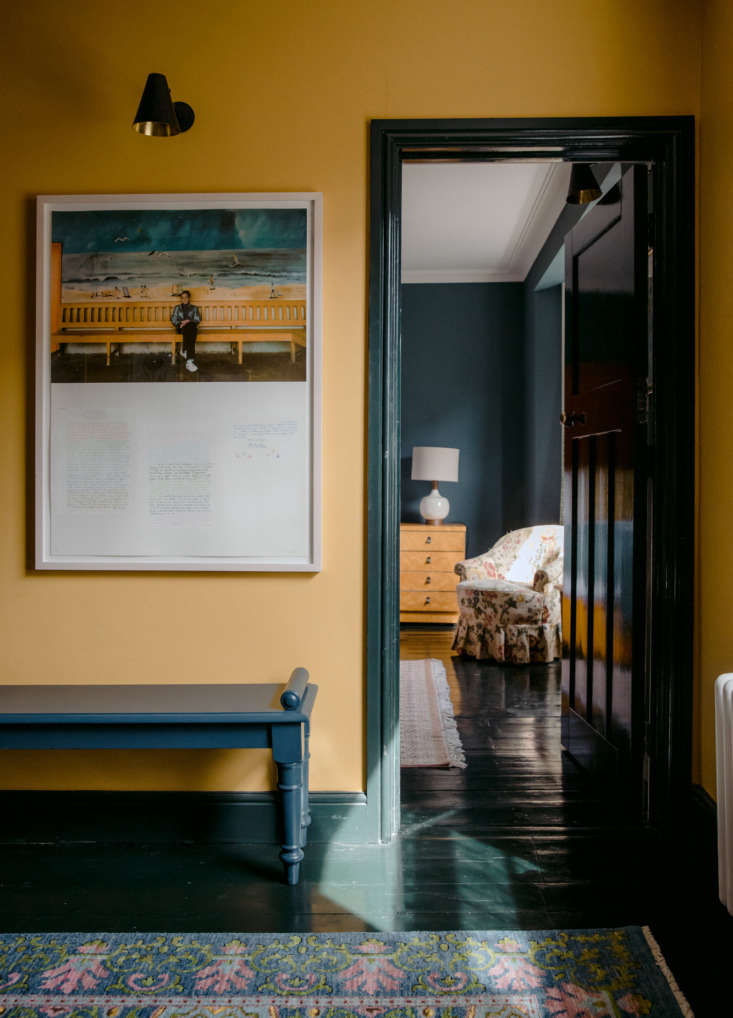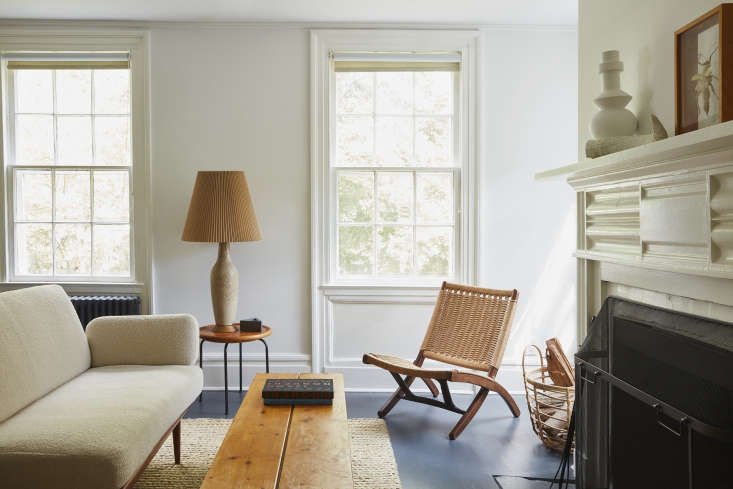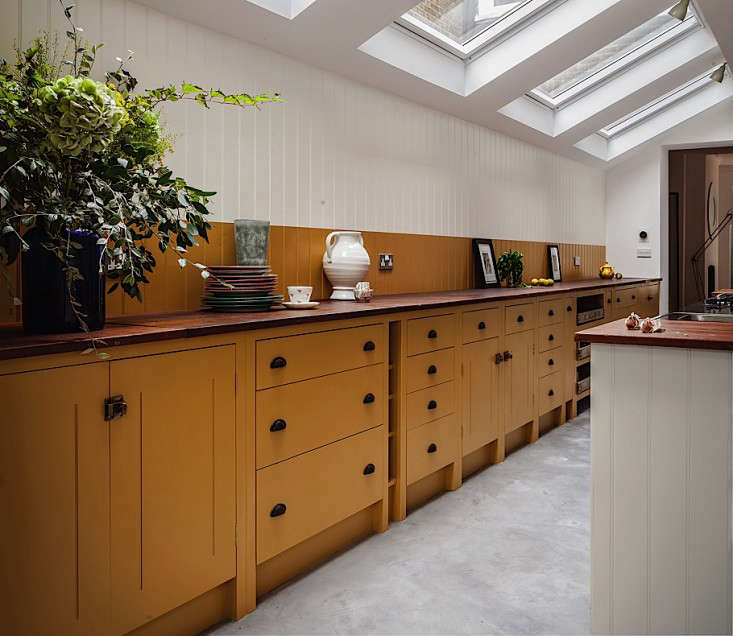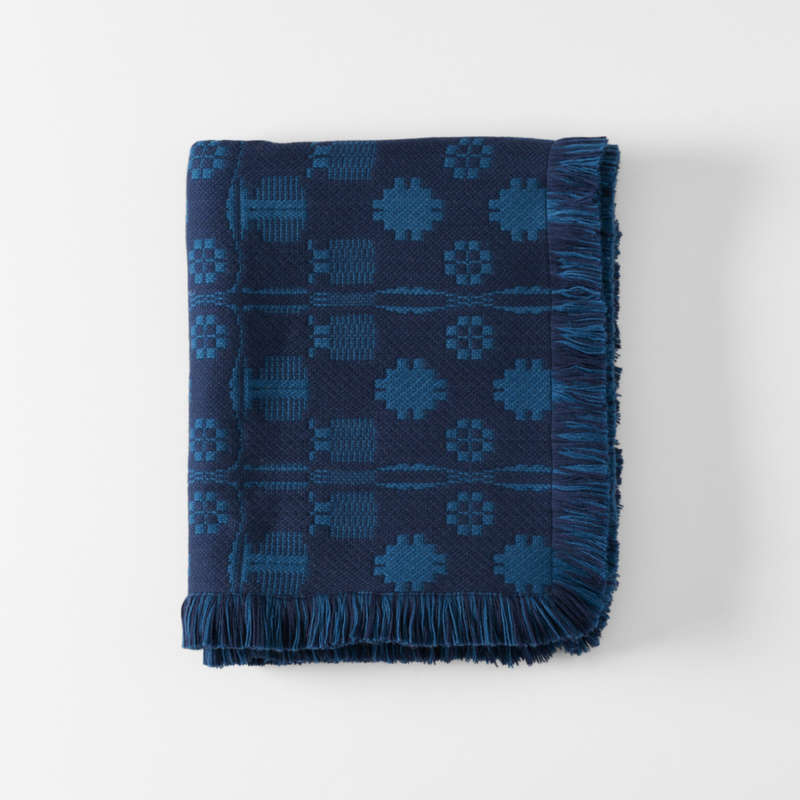For maximum transformation on minimum budget, you can’t beat paint. A new color on the walls can change the mood of a room, but it doesn’t stop there: a few coats can change up a piece of furniture or transform an entire kitchen. So when Fan asked, in a recent editorial meeting, what to do about the unloved flooring in her guest bath, Julie’s answer was, of course: paint it.
Painted wood floors are most often associated with seaside cottages, where they originated for their no-fuss practicality (take a look at a few of our favorites in The Case for Painted Wood Floors in the Summer Cottage). But paint is not just for hardwood floors: you can also paint tile, concrete, plywood, even linoleum. Here are 10 more things to know about painting floors.

1. You’ll need an escape plan.
Don’t paint yourself into a corner. Have an escape route in mind: start from the side of the room opposite the door, then back your way out.

2. The best paint might be at the marine supply store.
You don’t want to have to tiptoe across your painted floors, lest they chip or show wear; the whole appeal is that they’re hardwearing and practical. To get this effect, use at least a semigloss paint from the paint aisle, perhaps coated with some polyurethane if you’re worried about wear. But it might pay to look beyond standard interior paints. Seek out latex enamel-based marine, boat, or porch paint, all of which is hardwearing and built to wear. (You could also use trim enamel matched to a shade you like.) Note that oil-based paints will be hardy, but will also be high in VOCs; read more about that in Remodeling 101: All You Need to Know About VOCs in Paint.

3. Save your back by using a floor buffer.
If it’s finished wood floors you’re painting, you’ll need to sand and prime. It can be backbreaking work if you’re on your hands and knees with sandpaper—or even an orbital sander. Save your back and rent a floor buffer from the hardware store.
4. “Dark” does not mean “disguised.”
General wisdom would have us believe that white- or light-colored floors show every speck of dust and dirt, while black- or dark-colored floors disguise debris. But that’s misleading: we’ve been told (from experience) that dark-colored floors show much more than you’d think—including every dust bunny and crumb. If disguising mess is your only reason for going dark, think twice before you commit.

5. Painted floors can trick the eye.
Painted floors can create some clever optical illusions. If you have white- or light-colored walls, paint the floors to match to make the space feel much bigger. Choose paint with a glossier sheen (or add a glossy topcoat) to bring in more light. Or, choose a darker color than walls and ceiling to visually ground a space and add drama.
6. They’re endlessly customizable.
Then again, painted floors needn’t be solid. Use painter’s tape to create checkerboards, patterns, borders, or painted “rugs.” You can also delineate space by painting areas in different hues. Have a long, narrow space? Make it seem wider by painting horizontal stripes. You get the idea: you can customize your floors completely.

7. You can Jackson Pollock your floors.
Splatter-painted floors are everywhere in the cottages of Cape Cod. “I don’t know why our Victorian area ancestors started spatter-painting their floors—perhaps they couldn’t afford rugs, or more likely, they didn’t want to constantly beat the sand out of them—but I, for one, am glad they did,” writes Justine, who has splatter-painted floors in her own Cape cottage. “First of all, spatter-painted floors hide a multitude of sins; almost nothing shows up on them. But more important, they are simply beautiful. They’re a wonderful way to add texture and interest while still keeping the overall look minimal and clean.” See how to get the look yourself in DIY: Splatter-Painted Floors.

8. You might need to vacate for a bit.
Painting your floors is no small task: you’ll need to move out all of your furniture (yes, all of it) and be prepared not to walk in or through the room for several days while the coats dry. And the heavy-duty, hardwearing paint that’s suitable for floors also comes with lots of fumes. Try to paint your floors before you move in, if possible; if you’re already settled, consider closing off the room or heading somewhere else for a while to get away from the fumes.
9. Painting floors is budget friendly.
Compared to the cost of laying all-new flooring, painting tired floors is incredibly budget friendly: all you’ll need is a gallon (or a few) of paint, plus primer and supplies. Just be aware that, once you paint, it’ll be hard, if not impossible, to revert your floors back to the way they were. Read more about the wallet-friendly merits of painting in Expert Advice: 4 Affordable Floor Finishes from Dirty Girl Construction.

10. Worried about wear? Just add more paint.
No need to worry too much about wear and tear. If and when you floors start to lose their luster, just add another coat of paint, or a few touch-ups—or embrace the patina.
Embarking on a renovation for the first time? Take a read through our series:
- 10 Things Nobody Tells You About Subway Tile
- 10 Things Nobody Tells You About Painting Furniture
- 10 Things Nobody Tells You About Washing Your Bedding
- 10 Things Nobody Tells You About the Trendiest Tile of 2019
- 10 Things Nobody Tells You About Renovating Your Bathroom
- 10 Things Nobody Tells You About the Benefits of Wool
- 10 Things Nobody Tells You About Clawfoot Bathtubs
- 10 Things Nobody Tells You About Painting Kitchen Cabinets
- 10 Things Nobody Tells You About Shiplap
- 10 Things Nobody Tells You About Marble Countertops
- 10 Things Nobody Tells You About Painting a Room White




Have a Question or Comment About This Post?
Join the conversation